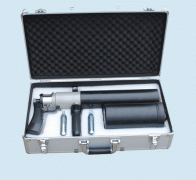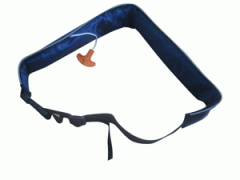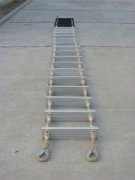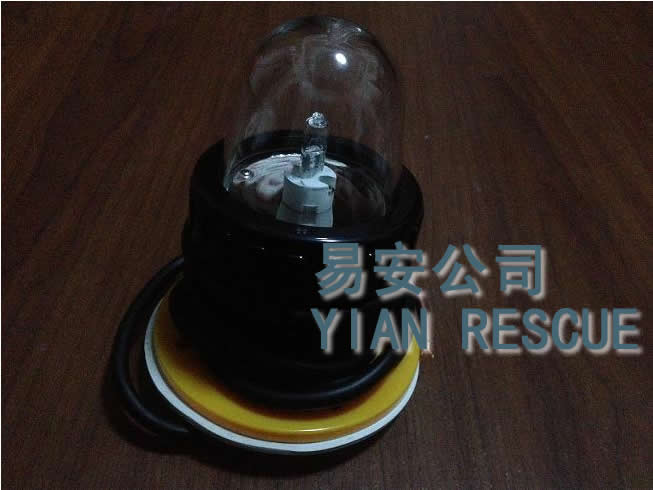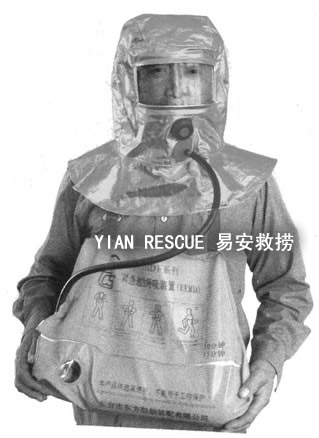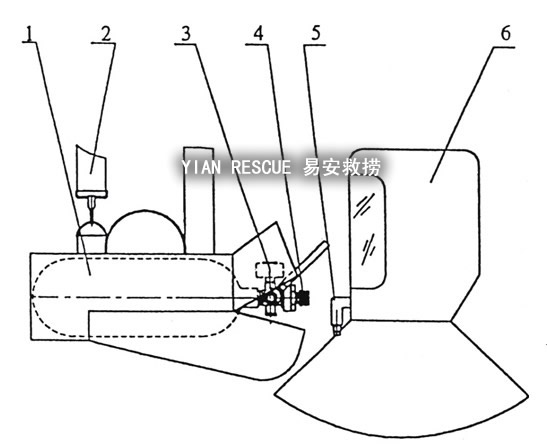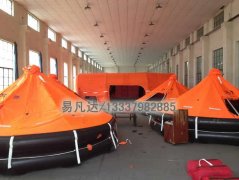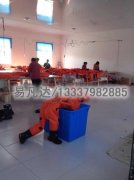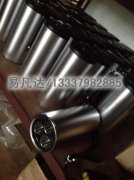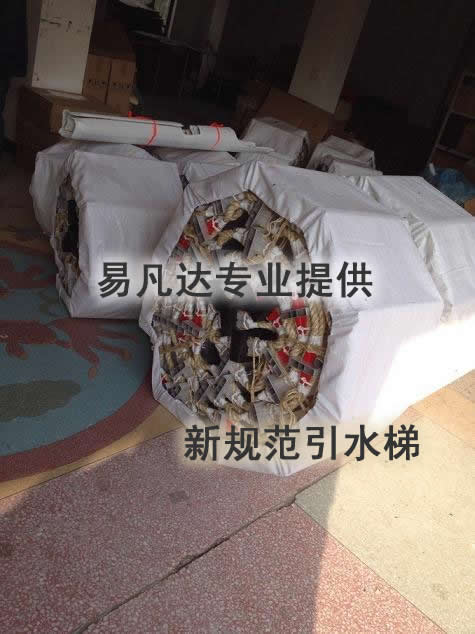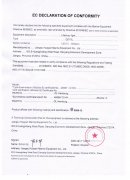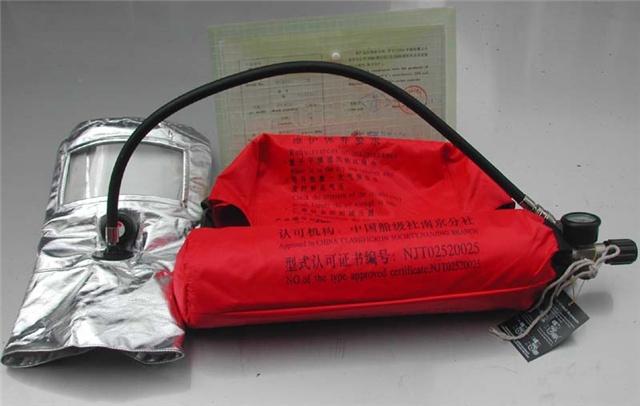 紧急逃生呼吸装置产品,如需要帮助请致电13337982885
紧急逃生呼吸装置产品,如需要帮助请致电13337982885
本产品经中国船级社南京分社认可,符合《国际消防安全系统规则》要求。
使用本产品必须按说明书中规定进行操作、维护保养,否则会危及人员的安全或损坏仪器。
一、适用范围
THDF系列压缩空气紧急逃生呼吸装置分为2.2L 21Mpa气瓶和3L 21Mpa气瓶两种,分别提供10分钟和15分钟以上的恒流空气,可供处于有毒、有害、烟雾、缺氧环境中的人员逃生用。主要适用在船只的驾驶室、机房、铺位区、娱乐室、主要的竖直空间等场所,也适用于其它类似的危险空间的人员逃生使用。
二、特点
1、THDF系列体积小、重量轻、操作简单、使用方便,可手提、肩挎或挂在颈部,适合各类人员使用。
2、THDF系列可提供恒流空气,气瓶贮存量大于400L,使佩戴者呼吸舒适。
三、主要技术参数
|
序号 |
型 号 |
THDF10-I |
THDF15-I |
|
1 |
气瓶容积 |
2.2L |
3L |
|
2 |
气瓶额定工作压力 |
21Mpa |
21Mpa |
|
3 |
使用时间 |
≥10min |
≥15min |
|
4 |
供气量 |
≥35L/min |
≥35L/min |
|
5 |
质 量 |
≤6kg |
≤8.5kg |
四、结构及工作原理
1、结构
本产品主要由气瓶、减压器、压力表、输气导管、头罩、背包等组
成(见图一)。
1、气瓶 2、背包 3、压力表 4、减压器 5、输气导管 6、头罩
图一THDF系列压缩空气紧急逃生呼吸装置
2、工作原理
THDF系列压缩空气紧急逃生呼吸装置用钢质气瓶贮存压缩空气,经减压器减压,从输出口输出恒定气流,通过输气导管进入头罩,向佩戴者提供呼吸用的洁净空气。
五、使用方法(见图二)
1、将背包带挂在颈部(也可手提或肩挎),THDF置于胸前;
2、打开背包盖,取出头罩,撕开背包上气瓶阀处的盖头,逆时针方向拧开气瓶阀直至完全打开;
3、将头罩戴在头上,使进气口处于面部,收系颈带;
4、开始逃生。
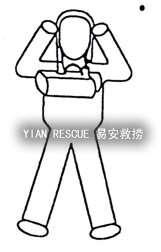

挎上背带 取出头罩,拧开气瓶阀
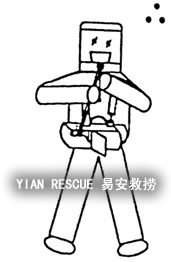

收紧脖带 紧急逃生
图二THDF系列压缩空气紧急逃生呼吸装置使用示意图
六、注意事项
1、只有经过培训的人员才能使用、管理和维护保养THDF紧急逃生呼吸装置。
2、THDF严禁烘烤及暴晒,严禁剧烈撞击。
3、备用时,THDF应放在便于提取处,压力表应处于背包的视窗处。
4、头罩要规范的折叠后放入背包袋中。
5、每月要检查压力表示值,若气瓶内的压力低于额定工作压力的95%,须进行检查或充气。
6、气瓶从出厂之日起,每三年要进行一次检验,检验合格后方可继续使用。
七、检查
每个月或每次使用后,要对THDF进行认真地检查,检查记录要保存。
THDF系列压缩空气紧急逃生呼吸装置检查维修记录表
产品型号________ 出厂编号__________ 生产日期_________
|
检查部件 |
检查项目 |
检查结果 |
检修人 |
|
头罩 |
视窗完好 |
|
|
|
无破损 |
|
|
|
清洁 |
|
|
|
压力表 |
压力≥额定工作压力的95% |
|
|
|
完好无损 |
|
|
|
输气导管 |
管夹无松动 |
|
|
|
无漏气 |
|
|
|
气瓶 |
无明显凹痕 |
|
|
|
无裂痕 |
|
|
八、维护保养
1、使用过的面罩要认真清洗和擦拭,视窗部分要保证透明。
2、晾干后的面罩按折叠示意图折好,放入背包袋内。
3、若发现面罩有破损,要立即更换。
4、要防止减压器和输出口部位生锈,若发现有生锈现象要及时处理。
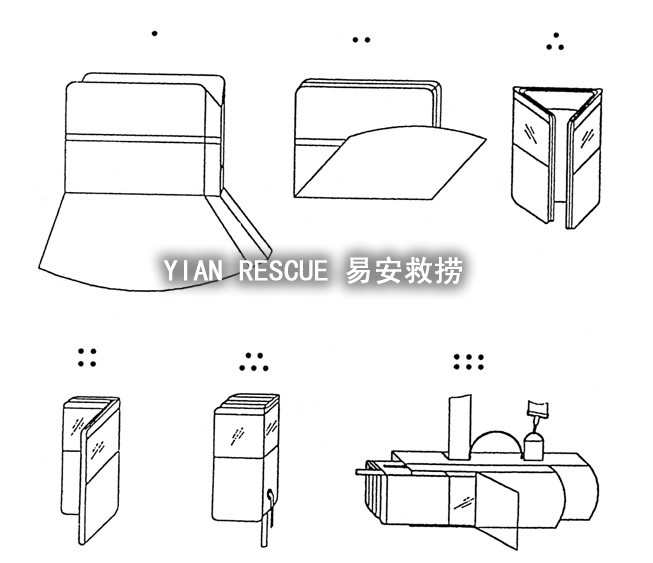
图三 面罩折叠示意图
九、充气
注意:气瓶充气应由具有专业技术和设备的充装机构的人员进行。
1、将气瓶与充气机对接,接口不要涂刷油酯;
2、向气瓶内缓慢充气,至21Mpa停止,充入气瓶内压缩空气应经滤湿器进行干燥。
3、瓶体冷却后瓶内气体压力会随温度降低而降低,为保证满足21Mpa工作压力,需在冷却后向瓶内进行再次补气。
4、气瓶充气后应进行气密性试验,检查瓶阀是否泄漏。
5、已充气的合格气瓶应做标识,以便区别。
6、充气、贮运过程中应轻拿轻放,严禁敲、撞击气瓶,或将气瓶长期存在高温,有腐蚀性介质的环境中。
THDF常见故障及修理
|
序号 |
故障现象 |
可能出现的原因 |
解决方法 |
|
1 |
压力表无压 |
1、气瓶无气 |
充气 |
|
2、压力表损坏 |
换表 |
|
3、气瓶开关未打开 |
打开开关 |
|
2 |
安全阀 |
1、减压器阀门泄漏 |
修减压器阀门和阀杆 |
|
2、安全阀损坏 |
修理安全阀 |
|
3 |
整机不气密 |
1、密封件损坏 |
查出漏气处更换封件 |
|
2、输出口关闭不到位 |
调整气瓶阀阀芯 |
|
4 |
不供气 |
输出口未打开 |
弹簧卡死、O型圈处涂硅油 |
|
5 |
供气量不足 |
输出压力过低 |
调整减压器上盖螺帽、加大输出压力 |
This product has been approved by the Nanjing Branch of the Ship Registry of China classification society and is in conformity conformity with the documents of the International Fire Safety System Regulations.
To operate and maintain the product, the regulations of the operation Manual must be observed, Otherwise the safety of the user will be daggered or the instrument will be damaged.
1. Applicable range
THDF Air Compressed Emergency Escape Breathing Device has two types: 2.2L 21Mpa cylinder and 3L 21Mpa cylinder. It supplies 10 or 15 minutes of constant flow air separately. It can be used to escape when the person is under the environment with noxious gases, harmful gases, smoke or lack of oxygen. It is applicable mainly for the driver’s, cab, engine room, bunk area, recreation room and vertical place of the ship. And it is applicable for other similar dangerous space also.
2. Characteristics
1.THDF series urgent breath equipment has the characteristics of small volume, lightweight. It is simple to operate and easy to use. It can be taken by hand, carried over shoulder or put on the neck by all kinds of user.
2.THDF series urgent breath equipment can provide constant flow air. The cylinder is filled over 400L air, and comfortable for breathing to the user
3. Technical Data
|
№ |
Type |
THDF10-I |
THDF15-I |
|
1 |
Cylinder volume |
2.2L |
3L |
|
2 |
Working Pressure |
21Mpa |
21 Mpa |
|
3 |
Time of Usage |
≥10min |
≥15min |
|
4 |
Air Supply Flow |
≥35L/min |
≥35L/min |
|
5 |
Weight |
≤6Kg |
≤8.5Kg |
4. Structure and Working Principle
1. Structure
The product mainly consists of air cylinder, pressure reducer, pressure gauge, air supplying hose, mask and bag.
1.Air cylinder 2.Bag 3.Pressure gauge
4.Pressure reducer 5.Air supplying hose 6.Mask
Fig.1 THDF Air Compressed Emergency Escape Breathing Device
2. Working principle
The compressed air in the steel air cylinder of the THDF series urgent breath equipment goes throuth the pressure resucer, The reduced air goes out of the exit to be constant flow air, and then goes into mask through air supplying hose to provide the user with clean air for breathing.
5. Usage
1.Put the bag on the neck (or shoulder, or handle it by hand), and THDF before chest;
2. Open the bag, and take out the mask, and tear off the cover of the air cylinder valve, and then turn on the valve in anticlockwise till completely open;
3. Wear the mask on the head, and make the entrance of the air fit the face, and then fasten the belt;
4. Start to escape.


Put the bag on the neck Take out the mask and turn on the valve


Fasten the belt Emergency escape
Fig.2 Usage of THDF Air Compressed Emergency Escape Breathing Device
6. Cautions
1. THDF series urgent breath equipment can be used, managed and maintained only by the person after training.
2. Don’t toast, strike heavily or expose THDF to the sun.
3. THDF should be taken to the convenient place for using and the pressure gauge should be put to the window of the bag during spare time.
4. The mask should be folded up standard in the bag.
5. The pressure gauge should be checked each month. If the pressure of the air cylinder is lower than 95% of the working pressure, check the cylinder or recharge the air immediately.
6. Check the air cylinder every three years after the date of production It can be continue to use only after checking up to standard.
7. Checking
Check the THDF seriously after using or every month, and keep the recorder.
Recorder of checking and maintenance for
THDF Air Compressed Emergency Escape Breathing Device Type of product________ product No. _________ Date of product ________
|
Parts |
Checking items |
Result |
Checking person |
|
Mask |
Complete window |
|
|
|
Without broken |
|
|
|
Cleanness |
|
|
|
Pressure gauge |
Pressure≥95% of the working pressure |
|
|
|
Without broken |
|
|
|
Air supplying hose |
Screw thread tight |
|
|
|
Without leakage |
|
|
|
Air cylinder |
Without clean sunken |
|
|
|
Without crack |
|
|
8. Maintenance
1. Clean the mask seriously after using, and the window screen should be transparent.
2. Fold up dried mask and put it into the bag according to fig.3.
3. Replace a new one immediately if the mask is damaged.
4. Prevent the pressure reducer and exit place from rusty. Treat it immediately if rust occurs.

Fig.3 Folding up the mask
9. Air recharge
Caution: the air recharge should be finished by professionals with special equipments.
1. Connect the air cylinder with charger. NO oil on the connecting.
2. Charge the air slowly till 21Mpa . The compressed air should be dried by filter.
3. The air pressure will get down with the temperature going down.
The air cylinder should be recharged additionally in order to guarantee the level of 21Mpa.
4.Do the air proof test to the valve after recharging. Check if the cylinder valve is leakage or not.
Mark the passed air cylinder in order to distinguish them.
Handle with care during charging and transporting. No knocking, striking and no storing in high temperature or cauterization places.
Common troubles and solutions of the THDF
|
No. |
Appearances |
Probable reasons |
Solutions |
|
1 |
No pressure of the pressure gauge |
No air in the cylinder |
Recharge air |
|
The pressure gauge is damaged |
Change a new one |
|
The air cylinder valve is not open |
Open the valve |
|
2 |
Safety valve |
The pressure reducer valve is leakage |
Repair the valve |
|
Safety valve is damaged |
Repair the safety valve |
|
3 |
The whole device is not airtight |
Sealing parts are damaged |
Check out and replace |
|
Exit place is not switched off completely |
Adjust the valve core |
|
4 |
No air provided |
Exit place is not open |
Spring is block, smear the O-type washer with grease |
|
5 |
Shortage of air provided |
The output pressure is too low |
Adjust the screw on the pressure reducer to increase the output pressure |


